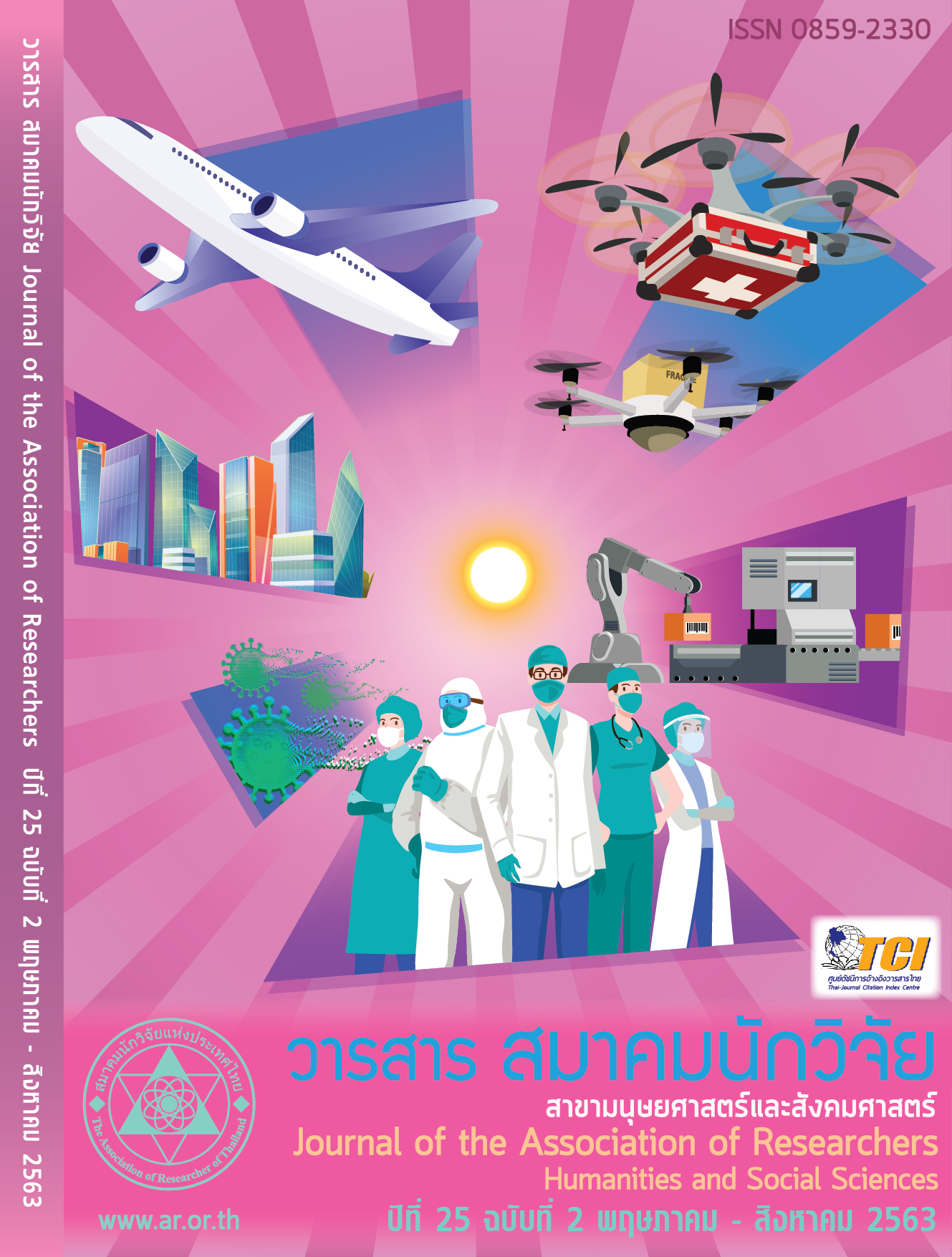A MORTALIY MODEL AND ITS IMPLICATIONS FOR THE THAI ELDERLY
Main Article Content
Abstract
The objective of this study aims at modeling the mortality rate of the Thai elderly by using the Inverse-Makeham model, together with the Coale-Kisker method. The data used in the study are the size of the Thai population at the end of the year and the number of deaths classified by gender and the age of the Thai population from 2003-2016. The Lee-Carter model was also applied to forecast the mortality rate of the Thai elderly for the next 11 years, from 2017 to 2027, and then to adjust the Mortality Table of Thailand. The results revealed that, when the Lee-Carter Model estimating the parameter using the Singular Value Decomposition was applied, the predicted mortality rates during the years 2017 - 2027 for males and females were in the same direction and are likely to decrease over time. In the meantime, the life expectancy of both sexes has been declining until the age of 60, and the life expectancy then began to decline at a slower rate until approaching 0 at age 110. As a consequence, the study used the results of the analysis to adjust the Thai Mortality Table for the years 2017 and 2027 in order to present which changes rapidly will occur in the structure of the Thai population, which is living longer today. The study recommends that the insurance sector should prepare to handle the changes in the Thai society (more elderly people) and higher longevity risks in the Thai society in order to design appropriate life insurance and insurance products. In the meantime, the government should expedite the findings of the measures to support the increasing number of Thai elderly in the near future, as forecasted in this study.
Article Details
บทความที่ปรากฏในวารสารนี้ เป็นความรับผิดชอบของผู้เขียน ซึ่งสมาคมนักวิจัยไม่จำเป็นต้องเห็นด้วยเสมอไป การนำเสนอผลงานวิจัยและบทความในวารสารนี้ไปเผยแพร่สามารถกระทำได้ โดยระบุแหล่งอ้างอิงจาก "วารสารสมาคมนักวิจัย"
References
Doray, L.G. (2008). Inference for Logistic-type Models for the Force of Mortality. Retrieved from https://www.soa.org/globalassets/assets/files/resources/essays-monographs/2008-living-to-100/mono-li08-4a-doray.pdf.
Dowd, K., Cairns, A.J.G., Blake, D., Coughlan, G.D., Epstein, D., and Khalaf-Allah, M. (2010). Evaluating the Goodness of Fit of Stochastic Mortality Models. Insurance Mathematics and Economics, 47(3): 255-265.
Gompertz, B. (1825). On the Nature of the Function Expressive of the Law of Human Mortality, and on a New Mode of Determining the Value of Life Contingencies. Philosophical Transactions of the Royal Society. 115: 513–585.
Hustead, E. C. (2005). Ending the Mortality Table. Retrieved from: https://www.soa.org/ library/monographs/retirement-systems/living-to-100-and-beyong/2005/january/m-li05-1-ix.pdf.
Lee, R. D., and Carter, L. R. (1992). Modeling and forecasting U.S. mortality. Journal of the American Statistical Association. 87(419): 659-671.
Lee, R., and Miller, T. (2001). Evaluate the performance of the Lee-Carter method for forecasting mortality. Demography. 38: 537-549.
Gavrilov, L. A., Gavrilova, N. S., and. Krut'ko, V. N. (2017). Historical Evolution of Old-Age Mortality and New Approaches to Mortality Forecasting. Living 100 Monogr. Retrieved from: https://www.ncbi.nlm.nih.gov/pmc/articles/PMC5696801/
Makeham, W. M. (1860). On the Law of Mortality and the Construction of Annuity Tables. Journal of the Institute of Actuaries and Assurance Magazine. 8 (6): 301–310.
Mumpar-Victoria, M. R., Hermosilla, A., Y., and Mirandilla, R. M. (2005). "Makeham-Type" Mortality Models. Retrieved from https://www.soa.org/globalassets/assets/files/resources/essays-monographs/2005-living-to-100/m-li05-1-xiii.pdf
Natthasurang Yasungnoen. (2015). Forecasting Thai Mortality by Using a modified Lee-Carter Model. Thesis, Doctor of Philosophy in Applied Mathematics, Suranaree University of Technology, Thailand.
Bank of Thailand. (2018). Aging Society and the Challenges of the Thai Labor Market. A study project of the structure of the Thai economy that has implications for monetary policy implementation, Monetary Policy Group, Bank of Thailand. Retrieved from https://www.bot.or.th/Thai/ResearchAndPublications/DocLib_/Article_01Aug2018.pdf (in Thai).
Department of Provincial Administration, Ministry of Interior. (2019). Registration Statistics System. Bureau of Registration Administration, Department of Provincial Administration. (in Thai).
Foundation of Thai Gerontology Research and Development Institute. (2018). The situation of the Thai elderly in 2017. Bangkok, www.thaitgri.org. (in Thai).
Nattakorn Suramethakul. (2009). Mortality Projections for Thailand: A Comparison of Three Methods (Lee Carter, Fuzzy Formulation, and Wang Transform). Thesis, Master of Science Program in Insurance, Department of Statistics, Faculty of Commerce and Accountancy, Chulalongkorn University. (in Thai).
Nicha Racharit and Suwanee Surasiengsunk. (2006). Forecasting models for Thai mortality rates using the Lee-Carter method. The Journal of Demography, 22(2), 25-42. (in Thai).
Office of Insurance Commission (OIC). (2009). Mortality Table B.E.2552. Registrar's announcement regarding the calculation of insurance premium rates and various values according to insurance policies for pension insurance policy B.E.2552. Retrieved from http://www.oic.or.th. (in Thai).
Pattama Waphatthanawong and Pramot Prasatkun. (2006). Thai Population in the Future. Institute for Population and Social Research, Mahidol University, (in Thai).
Sayhumpooh Saichonpitak. (2010). Estimation of Thai Elderly Mortality Rates Using Kannisto Model, Makeham Model, Inverse-Makeham Model, and Extreme-Value Theory. Thesis, Master of Science Program in Insurance, Department of Statistics, Faculty of Commerce and Accountancy, Chulalongkorn University. (in Thai).
United Nations Population Fund (UNFPA). (2018). The Elderly in the 21st Century: Celebrations and Challenges. Reported by United Nations Population Fund and HelpAge International. Retrieved from https://www.unfpa.org/sites/default/files/pub-pdf/Thai%20summary_ Ageing%20in%20the%2021st%20Century_0.pdf (in Thai).


